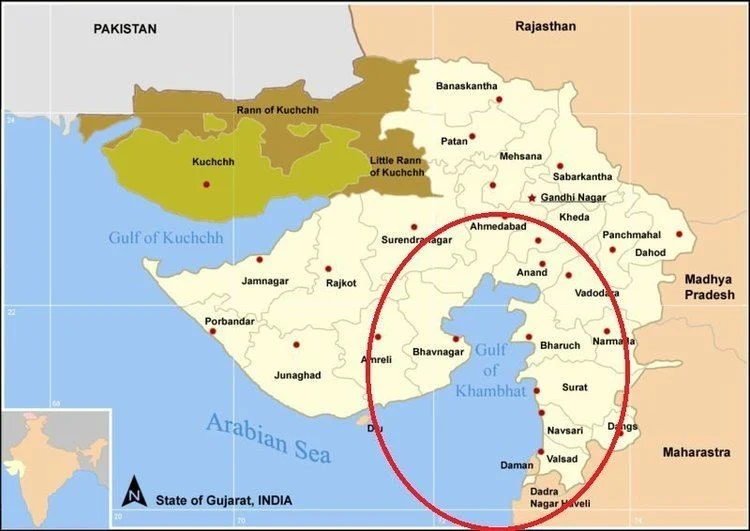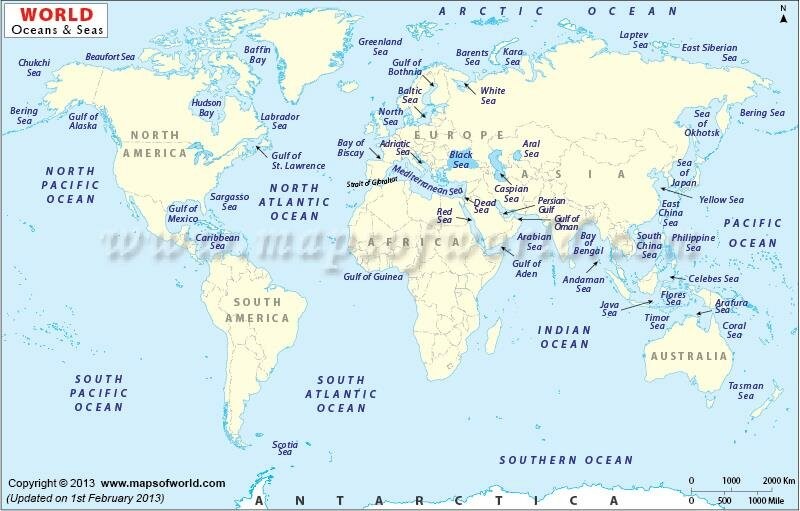





Copyright infringement not intended
Picture Courtesy: https://alchetron.com/Gulf-of-Khambhat
Context: The Indian Coast Guard evacuated an injured patient from the fishing boat Pushkar Raj, near the Gulf of Khambat.
About the Gulf of Khambhat
|
Key Points |
Gulf |
Bay |
|
Definition |
A gulf is a large body of water that is partially surrounded by land, commonly with a narrow mouth. |
A bay is a body of water that is partially enclosed by land but has a wider mouth than a gulf. |
|
Size |
Gulfs are generally larger in size compared to bays and can span extensive areas along coastlines. |
Bays are typically smaller in size compared to gulfs and may vary in size depending on local geography. |
|
Mouth |
Gulfs have a narrower mouth, which may be partially closed off by land formations or islands. |
Bays have a wider mouth, allowing for more open access to the ocean or sea. |
|
Formation |
Gulfs are often formed by the movement of tectonic plates or by erosion from rivers and oceans. |
Bays can be formed through various processes, including erosion, glacial activity, or tectonic movements. |
|
Ecological Importance |
Gulfs may serve as important habitats for marine life due to their relatively enclosed nature and diverse ecosystems. |
Bays provide sheltered areas for marine life and can support diverse habitats, including estuaries and mangroves. |
|
Economic Significance |
Gulfs often play a crucial role in international trade and commerce, serving as important shipping routes and ports. |
Bays may support local economies through fishing, tourism, and recreational activities, as well as shipping and transportation. |

Source:
Difference Between Gulf And Bay
|
PRACTICE QUESTION Q. Consider the following statements: 1. Gulfs commonly have a more restricted entrance compared to bays. 2. Rifting caused by plate movements is a common factor in gulf formation. 3. Gulfs can influence regional climates and potentially support a wider variety of marine life. How many of the above statements are correct? A) Only one B) Only two C) All three D) None Answer: C |






© 2025 iasgyan. All right reserved